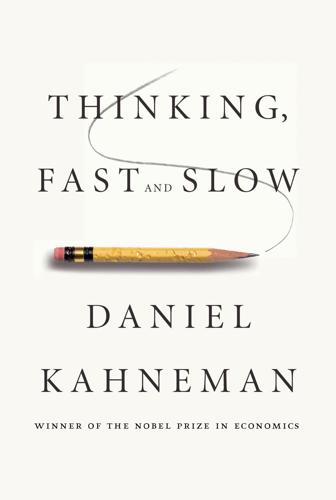
Thinking, Fast and Slow
by
Daniel Kahneman
Published 24 Oct 2011
The choices that people made on their own behalf are fairly described as mistakes. Duration neglect and the peak-end rule in the evaluation of stories, both at the opera and in judgments of Jen’s life, are equally indefensible. It does not make sense to evaluate an entire life by its last moments, or to give no weight to duration in deciding which life is more desirable. The remembering self is a construction of System 2. However, the distinctive features of the way it evaluates episodes and lives are characteristics of our memory. Duration neglect and the peak-end rule originate in System 1 and do not necessarily correspond to the values of System 2.
…
judgment heuristics Judgment in Managerial Decision Making (Bazerman) judgments; basic assessments in; of experts, see expert intuition; intensity matching in; mental shotgun in; predictive, see predictions and forecasts; sets and prototypes in; summary, of complex information; see also decisions, decision making “Judgment Under Uncertainty: Heuristics and Biases” (Tversky and Kahneman) Julie problem jumping to conclusions; bias for belief and confirmation in; halo effect in, see halo effect; suppression of ambiguity and doubt in; WYSIATI in, see what you see is all there is Kaye, Danny keeping score; mental accounts and; regret and; responsibility and KEEP-LOSE study kidney cancer Killing Ground, The kitchen renovations Klein, Gary Knetsch, Jack know, use of word knowledge; reconstruction of past states of kouros Krueger, Alan Kunreuther, Howard Kuran, Timur labor negotiations Lady Macbeth effect language, complex vs. simple Larrick, Richard Larson, Gary law, see legal cases law of large numbers law of small numbers; and bias of confidence over doubt laziness of System 2 Layard, Richard leaderless group challenge leadership and business practices; at Google LeBoeuf, Robyn legal cases: civil, damages in; DNA evidence in; fourfold pattern and; frivolous; loss aversion in; malpractice; outcome bias in leisure time less-is-more pattern Lewis, Michael libertarian policies Lichtenstein, Sarah life: evaluation of; stories in; satisfaction in; thinking about Linda problem List, John loans logarithmic functions loss aversion; in animals; enhanced; goals as reference points in; in legal decisions; status quo and loss aversion ratio losses lotteries Lovallo, Dan Love Canal luck lying Malkiel, Burton Malmendier, Ulrike malpractice litigation Mao Zedong march of historyuote> Markowitz, Harry marriage; life satisfaction and Mathematical Psychology (Dawes, Tversky, and Coombs) matter, relation of mind to McFarland, Cathy media, availability heuristic and medical school admissions medical survey problem medicine; expertise in; malpractice litigation; overconfidence in; physicians; unique cases in; unusual treatments in Mednick, Sarnoff Meehl, Paul meetings memory, memories; associative, see associative memory; availability heuristic and, see availability; duration neglect in; experienced utility and; illusions of; and the remembering self; of vacations mental accounts mental effort, see effort mental energy mental shotgun mere exposure effect messages, persuasive metaphors Michigan/Detroit problem Michigan State University Michotte, Albert Miller, Dale mind, relation of matter to Mischel, Walter miswanting MIT money and wealth: cultural differences in attitudes toward; happiness and; income vs. leisure; mental accounts and; poverty; priming and; utility of Moneyball (Lewis) mood, see emotions and mood Morgenstern, Oskar Moses illusion motivation movies “MPG Illusion, The” (Larrick and Soll) mug experiments Mullainathan, Sendhil Müller-Lyer illusion multiple regression Mussweiler, Thomas mutual funds names: complicated; of famous people narrative fallacy narrow framing; disposition effect Naturalistic Decision Making (NDM) negativity dominance negotiations neuroeconomics New York Times, The New York University 9/11 Nisbett, Richard Nixon, Richard Nobel Prize norms norm theory novelty Nudge (Thaler and Sunstein) nutrition Oakland A’s Obama, Barack obesity Odean, Terry Office of Information and Regulatory Affairs one-sided evidence Oppenheimer, Danny optimal experience optimism; in CEOs; resilience and optimistic bias; competition neglect; in entrepreneurs; overconfidence; planning fallacy; premortem and; risk taking and Oregon Research Institute organ donation organizations outcome bias outside view ou> pain; chronic; cold-hand experiment and; colonoscopies and; duration neglect and; injection puzzle and; memory of; operation experiment and; peak-end rule and; in rats paraplegics parole past: and confusing experiences with memories; hindsight bias and; regret and pastness pattern seeking Pavlov, Ivan peak-end rule persuasive messages physicians; malpractice litigation and piano playing and weight, measuring plane crashes planning fallacy; mitigating plausibility pleasure; in rats Plott, Charles poignancy political experts political preference Pólya, George Pope, Devin Porras, Jerry I.
…
The wording was intended to encourage them to think of the integral of the pain they had reported, reproducing the hedonimeter totals. Surprisingly, the patients did nothing of the kind. The statistical analysis revealed two findings, which illustrate a pattern we have observed in other experiments: Peak-end rule: The global retrospective rating was well predicted by the average of the level of pain reported at the worst moment of the experience and at its end. Duration neglect: The duration of the procedure had no effect whatsoever on the ratings of total pain. You can now apply these rules to the profiles of patients A and B.

Don't Trust Your Gut: Using Data to Get What You Really Want in LIfe
by
Seth Stephens-Davidowitz
Published 9 May 2022
Due to duration neglect, many health scholars recommend patients carefully record the length of their symptoms before and after an intervention to see if they might be improving without the patients’ realizing it. Another cognitive bias that tricks us from making sense of our past experiences is the peak-end rule. We tend to judge past experiences not based on their overall pleasures and pains over the entire experience. Instead, we give undue weight to the peaks of the experience (how high the highs were or how low the lows were) and the ends of the experience (whether it ended on a high or low note).
…
This tricks Patient B into underestimating how awful the colonoscopy was. In fact, Redelmeier and Kahneman found that a key factor in predicting how painful people remembered their colonoscopy as being is how much pain they experienced in the final three minutes of the procedure. Since we suffer from duration neglect, the peak-end rule, and other cognitive biases, it is no wonder that human beings are not so great at learning from our own experiences to study our own happiness. The same problems that have hindered an individual’s attempt to figure out what makes them happy have, historically, hindered scientists’ attempts to understand happiness.
…
But it’s important not to exaggerate weather’s importance. Weather, by itself, can’t make you happy. You also need to be doing things that make you happy with people who make you happy. Conclusion Readers, it has come time to sum up this book. And I know I’d better make it a good summary because of the peak-end rule discussed in Chapter 8. Your feelings about this entire book are going to depend heavily on how you feel about these final few paragraphs. And, for those of you who think that reading this book felt like having a colonoscopy, perhaps I can at least make it like Patient B’s colonoscopy in Chapter 8: not so bad in the end, allowing you to remember the experience as less painful.
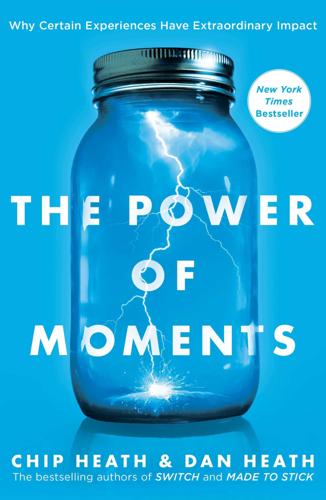
The Power of Moments: Why Certain Experiences Have Extraordinary Impact
by
Chip Heath
and
Dan Heath
Published 2 Oct 2017
Psychologists have untangled the reasons for this puzzling result. When people assess an experience, they tend to forget or ignore its length—a phenomenon called “duration neglect.” Instead, they seem to rate the experience based on two key moments: (1) the best or worst moment, known as the “peak”; and (2) the ending. Psychologists call it the “peak-end rule.” So in the participants’ memories, the difference between 60 and 90 seconds washed out. That’s duration neglect. And what stood out for them was that the longer trial ended more comfortably than the shorter one. (Both trials, by the way, had a similar peak moment of pain: close to the 60-second mark.)
…
(Both trials, by the way, had a similar peak moment of pain: close to the 60-second mark.) This research explains why, in reflecting on your Disney experience, you’ll remember Space Mountain (the peak) and the mouse ears (the end). Everything else will tend to fade. As a result, your memory of the day is far more favorable than the hour-by-hour ratings you provided. The peak-end rule holds true across many kinds of experiences. Most of the relevant studies tend to focus on short, laboratory-friendly experiences: watching film clips, enduring annoying sounds, etc. On longer time frames, peaks continue to matter but the relative importance of “endings” fades somewhat. Beginnings matter, too: When college alumni were asked about their memories from college, fully 40% of those memories came from the month of September!
…
(Drug Abuse Resistance Education), 190 death and car leases, 28 and deepening ties, 235–36 of Dinneen’s patient, 118–20 elevation and, 65–68 and important events in life of babies, 84 and making moments matter, 256–57, 258, 263 of O’Kelly, 65–68 and Perfect Moments, 66–68 responsiveness and, 235–36 role-playing about reactions to, 188 and thinking in moments, 28, 36, 39 See also grief deepening ties and caring, 232, 233, 234, 239, 241–42, 248 connections and, 136, 198, 223–46 and customers, 239–41, 248 and health care, 234–48 and making moments matter, 254 and relationship theory, 231–38 responsiveness and, 231–38, 239–41 at Stanton Elementary School, 223–31 and understanding, 232, 233, 234, 239, 241–42, 248 and validation, 232, 233, 234, 239, 241–42, 248 defining moments characteristics of, 5, 252, 265 creation of, 5, 16, 37–39, 89–92, 134–36, 196–99, 249–52 culture and, 18–19 definition of, 4, 12 elements of, 12–16, 43, 89–92, 134–36, 157 emotions and, 4, 14 examples of, 4–5 and fixing problems, 256–58 and flipping pits into peaks, 28–33 importance of, 4–6, 18–22, 255–56 investing in, 11–12, 18–22 and length of experience, 8, 12 negative, 14, 27, 28–33, 95 positive, 14 relics of, 16 and thinking in moments, 17–39 timing of, 33–34 transitions as natural, 19, 37, 171 why we remember, 6–16 See also specific topic Deloitte’s, 35 Dietz, Doug, 29–33, 43 Dinneen, Michael, 118–20, 132 direction + support, 123, 127, 132 Disney, 27, 207 Disney World: trip to, 6–7, 8–9 divorce, 38 Doka, Kenneth, 22–24 DonorsChoose, 151–55 dreams, 64–65, 132 drug programs, 190 Dull, Stephen, 78–83 Duncan, Arne, 4 Duncan, Craig, 163 duration neglect, 8 Dylan, Bob, 143 Eagleman, David, 85–86 Easter Vigil Service, Honig-intern at, 121–22, 255 Edgman-Levitan, Susan, 236 Elam, Mike, 245–46 Elevate the Positives Plan, 56–61, 60n elevation and The Bachelor TV show, 243n boosting sensory appeal and, 61–62, 62n, 63, 71, 87, 90–91, 134–35, 250 breaking the script and, 61, 69–92, 134–35, 157, 197, 249 and building peaks, 45–68, 243n and celebrations, 166, 171 characteristics of, 12–13, 16 and Chinese restaurant clinic, 134–35 and “Couch to 5K” program, 161 definition of, 43 as element of defining moments, 12–13, 15, 16, 43, 90–91, 134–35, 157, 197 and flipping pits into peaks, 33 importance/purpose of, 44, 87, 139 introduction to, 43–44 lessening of, 63 and making moments matter, 253, 255, 257, 263, 266 and pits, 43, 52, 54–61 and raising stakes, 61, 62, 63, 71, 87, 90, 121, 243n, 250 and reasonableness, 63, 88 recipe for, 87 “silo” mentality and, 249–50 as spontaneous, 44 and thinking in moments, 33 and timing of defining moments, 34 and transitions, 44 whirlwind review of, 87–88 Eleven Madison Park (restaurant), 135 Eli Lilly, 148–50, 194 Eliminate the Negatives Plan, 56–61, 60n emotions, 4, 14, 52, 96, 157, 252 employees and breaking the script, 74, 77 competencies of, 170–71 and connections, 207–11, 212–13, 215, 216–18, 221–22, 241 and creating defining moments, 265 and deepening ties, 233–34, 241 discretion of, 74, 77 first-day of, 265 and making moments matter, 256 motivation of, 145–46, 256 promotion of, 170–71 recognition of, 145–46, 158, 194, 234 and responsiveness, 233–34 and shared meaning, 207–11, 212–13, 215, 216–18, 221–22 See also jobs; specific organization endings, 9, 35. See also peak-end rule EPIC acronym, 15, 15n Episcopal Church of the Redeemer (Eagle Pass, Texas): meetings at, 89–92 ethics education, 186–88, 195, 198 Ettl, Scott, 171–73, 175 Eurich, Tasha, 198 exercise, 13–14, 25, 159–62, 173–75. See also “Couch to 5K” program; marathons expectations, 56, 70–71, 73, 87, 123–27 “The Experimental Generation of Interpersonal Closeness” (Aron study), 143–45 exposure therapy, 183–85 Eyes on the Prize (PBS series), 177 failure and flipping pits into peaks, 28–33 normalization of, 130 and stretch for insight, 117, 119, 121, 129, 130, 131, 132, 133 feedback: negative, 95 Fillmore, Millard, 172, 175 Fink, L.

Money: Vintage Minis
by
Yuval Noah Harari
Published 5 Apr 2018
The self-deceptions and self-delusions that trap people in bad relationships, wrong careers and harmful habits will not fool Google. Unlike the narrating self that controls us today, Google will not make decisions on the basis of cooked-up stories, and will not be misled by cognitive short cuts and the peak-end rule. Google will actually remember every step we took and every hand we shook. Many of us would be happy to transfer much of our decision-making processes into the hands of such a system, or at least consult with it whenever we face important choices. Google will advise us which movie to see, where to go on holiday, what to study in college, which job offer to accept, and even whom to date and marry.
…
Yet the life sciences point out that when I stand there behind that curtain, I don’t really remember everything I felt and thought in the years since the last election. Moreover, I am bombarded by a barrage of propaganda, spin and random memories that might well distort my choices. Just as in Kahneman’s cold-water experiment, in politics too the narrating self follows the peak-end rule. It forgets the vast majority of events, remembers only a few extreme incidents and gives a wholly disproportionate weight to recent happenings. For four long years I may have repeatedly complained about the PM’s policies, telling myself and anyone willing to listen that he will be ‘the ruin of us all’.
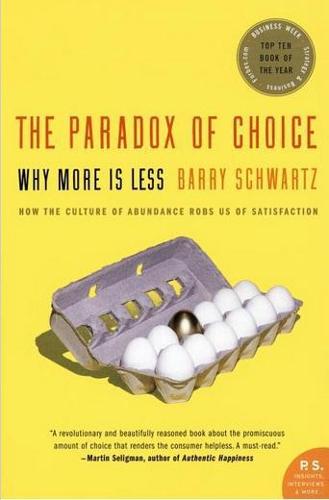
The Paradox of Choice: Why More Is Less
by
Barry Schwartz
Published 1 Jan 2004
Nobel Prize–winning psychologist Daniel Kahneman and his colleagues have shown that what we remember about the pleasurable quality of our past experiences is almost entirely determined by two things: how the experiences felt when they were at their peak (best or worst), and how they felt when they ended. This “peak-end” rule of Kahneman’s is what we use to summarize the experience, and then we rely on that summary later to remind ourselves of how the experience felt. The summaries in turn influence our decisions about whether to have that experience again, and factors such as the proportion of pleasure to displeasure during the course of the experience or how long the experience lasted, have almost no influence on our memory of it.
…
Nonetheless, the overwhelming majority of people chose the second to be repeated. Why? Because whereas both noises were unpleasant and had the same aversive peak, the second had a less unpleasant end, and so was remembered as less annoying than the first. Here’s another, quite remarkable example of the peak-end rule in operation. Men undergoing diagnostic colonoscopy exams were asked to report how they felt moment by moment while having the exam, and how they felt when it was over. Most people find these exams, in which a tube with a tiny camera on the end is inserted up the rectum and then moved around to allow the inspection of the gastrointestinal system, quite unpleasant—so much so that patients avoid getting regular tests, much to their peril.
…
New York Times, New Yorker, Nobel laureates noise experiment nondurable goods nonreversible decisions nontraditional medicines Norway novelty O objective results, subjective experiences and Olympic medalists, bronze vs. silver, omission bias opportunity costs accounting of definition of effects of opportunity costs of reversible decisions and optimists P parent-adolescent power struggles Paris patient responsibility, in medical care decisions “peak-end” rule Penn State University perceptual adaptation perfectionism pessimists Philadelphia, Pa. pickers, definition of “picture-in-picture” TVs “picture-in-picture” TVs Plato pleasure thermometer Poland polls. See surveys Porter, Roy positional competition positional goods positive liberty postdecision regret posters PPOs prescription drugs presumptions Prilosec Princeton University prison population product placement, in movies prospect theory comparisons and description of endowment effect and neutral point and sunk costs and psychological accounting public television, ads on Putnam, Robert Q Quarterlife Crisis R racial identification RAND Corporation Real Simple, reasoning, satisfaction and reference prices regret anticipated aversion of counterfactuals and effects of maximizing and mitigation of near misses and omission bias and postdecision Regret Scale responsibility and satisfaction and sunk costs and upside to see also trade-offs Regret (Landman) religion remembered utility responsibility, regret and restaurants retirement plans reversible decisions risk, risk assessment: loss and gain preferences and and most frequent causes of death prospect theory and see also decision-making risk aversion risk seeking romantic relationships, reasoning and routines rules, as means of eliminating choice “rules of the game,” S salience definition of omission bias and perception and satisfaction: misprediction of reasoning and regret and “three gap” assessment and see also happiness satisfaction treadmill Satisfaction with Life Scale satisficers definition of as maximizers maximizers compared with social comparison and trade-offs and scarcity Scitovsky, Tibor Seabrook, John second-order decisions security, primary importance of self-blame self-determination self-esteem, in comparison with others self-respect, freedom and Seligman, Martin Sen, Amartya shopping: comparison framing and reference prices and by maximizers by satisficers time vs. pleasure and Silent World of Doctor and Patient, The (Katz) Simon, Herbert simplicity Sipress, David sitcoms, decreasing length of Smaller, Barbara Smeloff, Edward A.
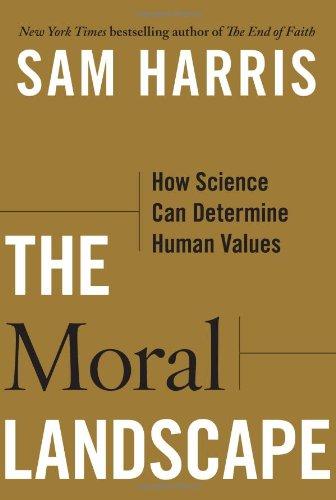
The Moral Landscape: How Science Can Determine Human Values
by
Sam Harris
Published 5 Oct 2010
There will be peaks and valleys on the moral landscape, and movement between them is clearly possible, whether or not we always know which way is up. There are many other features of our subjectivity that have implications for morality. For instance, people tend to evaluate an experience based on its peak intensity (whether positive or negative) and the quality of its final moments. In psychology, this is known as the “peak/end rule.” Testing this rule in a clinical environment, one group found that patients undergoing colonoscopies (in the days when this procedure was done without anesthetic) could have their perception of suffering markedly reduced, and their likelihood of returning for a follow-up exam increased, if their physician needlessly prolonged the procedure at its lowest level of discomfort by leaving the colonoscope inserted for a few extra minutes.37 The same principle seems to hold for aversive sounds38 and for exposure to cold.39 Such findings suggest that, under certain conditions, it is compassionate to prolong a person’s pain unnecessarily so as to reduce his memory of suffering later on.
…
And his justification for partitioning the human mind in this way is that these two “selves” often disagree. Indeed, they can be experimentally shown to disagree, even across a relatively brief span of time. We saw this earlier with respect to Kahneman’s data on colonoscopies: because “the remembering self” evaluates any experience by reference to its peak intensity and its final moments (the “peak/end rule”), it is possible to improve its lot, at the expense of “the experiencing self,” by simply prolonging an unpleasant procedure at its lowest level of intensity (and thereby reducing the negativity of future memories). What applies to colonoscopies seems to apply elsewhere in life. Imagine, for instance, that you want to go on vacation: You are deciding between a trip to Hawaii and a trip to Rome.
…
See also specific philosophers moral realism, 62, 64–67 moral relativism, 27, 36, 45–46, 191, 204n21, 205n28 moral responsibility, 106–12, 216–17n109 moral science, 46–53 moral truth: answers in practice and answers in principle for, 3, 30–31, 60, 191 consensus and, 31–32, 34 difficulties in discussion of, 27–38 disagreements concerning, 35–37 Hume’s is/ought distinction, 38, 42, 196n13 moral blindness in name of tolerance, 42–46 moral controversy and nullification of possibility of, 85–86 objectivity versus subjectivity and, 29–31, 198n4 religion and, 2, 33, 46, 62–63, 78, 146, 191 scientific context for, 1–4, 28, 46–53 scientists’ reluctance to take stand on, 6–7, 10–11, 22–25, 191 well-being related to, 1–4, 6, 28, 32–37, 87, 203–4n21 and worst possible misery for everyone, 38–42, 204n22 morality: brain regions affecting moral cognition, 91–95 chess compared with, 8, 207n17 contractual versus beehive approaches to, 89 evil and, 100–102 evolutionary origins of, 50–53 Greene on, 64–66, 208n20 Haidt on, 85–91, 180–81 illusion of free will and, 102–6, 110–12, 215n97, 216n102, 216–17n102 inaccuracy of intuitive morality, 36 interchangeability of perspective and, 80–81 intractability of disagreements on, 87–88 liberal notions of, 86–87 loss aversion and, 75–77, 209n35 motivation for, 91–92 norms of, 80–82 peak/end rule and, 77 personal versus impersonal moral dilemmas, 93–95, 213–14n79 principles versus universal conception of, 8 recent development of, 59 religion and, 2, 33, 46, 62–63, 78, 146, 191 right and wrong answers about well-being, 64–67 scientific context for, 1–4, 11, 28, 46–53, 80 universal foundation of, 190–91 well-being and moral hierarchy across human societies, 60–62 well-being related to, 1–4, 6, 28, 32–37, 87, 203–4n21 See also evil; good/goodness; moral landscape; moral truth; values; and headings beginning with moral motivation, 91–92, 126, 227n44 MRI.
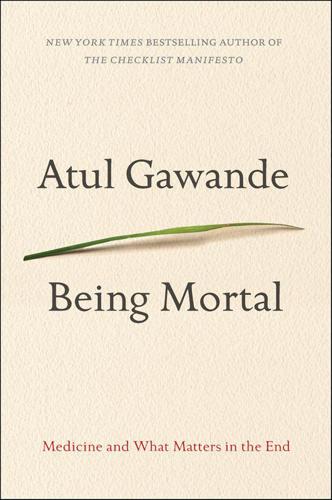
Being Mortal: Medicine and What Matters in the End
by
Atul Gawande
Published 6 Oct 2014
People seemed to have two different selves—an experiencing self who endures every moment equally and a remembering self who gives almost all the weight of judgment afterward to two single points in time, the worst moment and the last one. The remembering self seems to stick to the Peak-End rule even when the ending is an anomaly. Just a few minutes without pain at the end of their medical procedure dramatically reduced patients’ overall pain ratings even after they’d experienced more than half an hour of high level of pain. “That wasn’t so terrible,” they’d reported afterward. A bad ending skewed the pain scores upward just as dramatically. Studies in numerous settings have confirmed the Peak-End rule and our neglect of duration of suffering. Research has also shown that the phenomenon applies just as readily to the way people rate pleasurable experiences.
…
We believe that having a longer duration of pain is worse than a shorter duration and that having a greater average level of pain is worse than having a lower average level. But this wasn’t what the patients reported at all. Their final ratings largely ignored the duration of pain. Instead, the ratings were best predicted by what Kahneman termed the “Peak-End rule”: an average of the pain experienced at just two moments—the single worst moment of the procedure and the very end. The gastroenterologists conducting the procedures rated the level of pain they had inflicted very similarly to their patients, according to the level of pain at the moment of greatest intensity and the level at the end, not according to the total amount.
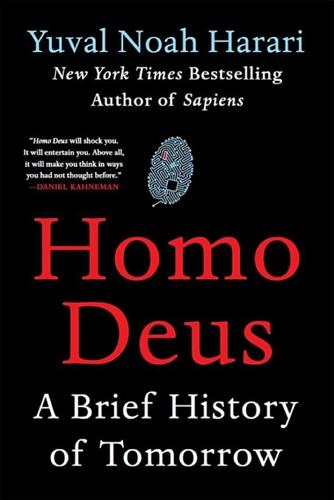
Homo Deus: A Brief History of Tomorrow
by
Yuval Noah Harari
Published 1 Mar 2015
Crucially, the narrating self is duration-blind, giving no importance to the differing lengths of the two parts. So when it has a choice between the two, it prefers to repeat the long part, the one in which ‘the water was somewhat warmer’. Every time the narrating self evaluates our experiences, it discounts their duration, and adopts the ‘peak-end rule’ – it remembers only the peak moment and the end moment, and evaluates the whole experience according to their average. This has far-reaching impact on all our practical decisions. Kahneman began investigating the experiencing self and the narrating self in the early 1990s when, together with Donald Redelmeier of the University of Toronto, he studied colonoscopy patients.
…
We might have expected the overall rank to reflect the accumulation of minute-by-minute reports. The longer the colonoscopy lasted, and the more pain the patient experienced, the higher the overall pain level. But the actual results were different. Just as in the cold-water experiment, the overall pain level neglected duration and instead reflected only the peak-end rule. One colonoscopy lasted eight minutes, at the worst moment the patient reported a level 8 pain, and in the last minute he reported a level 7 pain. After the test was over, this patient ranked his overall pain level at 7.5. Another colonoscopy lasted twenty-four minutes. This time too peak pain was level 8, but in the very last minute of the test, the patient reported a level 1 pain.
…
The self-deceptions and self-delusions that trap people in bad relationships, wrong careers and harmful habits will not fool Google. Unlike the narrating self that controls us today, Google will not make decisions on the basis of cooked-up stories, and will not be misled by cognitive short cuts and the peak-end rule. Google will actually remember every step we took and every hand we shook. Many people will be happy to transfer much of their decision-making processes into the hands of such a system, or at least consult with it whenever they face important choices. Google will advise us which movie to see, where to go on holiday, what to study in college, which job offer to accept, and even whom to date and marry.

The Undoing Project: A Friendship That Changed Our Minds
by
Michael Lewis
Published 6 Dec 2016
If you stuck people’s arms in ice buckets for three minutes but warmed the water just a bit for another minute or so before allowing them to flee the lab, they remembered the experience more fondly than if you stuck their arms in the bucket for three minutes and removed them at a moment of maximum misery. If you asked them to choose one experiment to repeat, they’d take the first session. That is, people preferred to endure more total pain so long as the experience ended on a more pleasant note. Danny wanted Redelmeier to find him a real-world medical example of what he was calling the “peak-end rule.” It didn’t take long for Redelmeier to come up with a bunch, but they settled on colonoscopies. In the late 1980s, colonoscopies were painful, and not merely dreaded. The discomfort of the procedure dissuaded people from returning for another one. By 1990, colon cancer was killing sixty thousand people every year in the United States alone.

Rationality: From AI to Zombies
by
Eliezer Yudkowsky
Published 11 Mar 2015
We can see the same pattern of behavior in children who, hearing arguments for and against the safety of seat belts, hop back and forth between thinking seat belts are a completely good idea or a completely bad one, instead of trying to compare the strengths of the pro and con considerations.21 Some more examples of biases are: the peak/end rule (evaluating remembered events based on their most intense moment, and how they ended); anchoring (basing decisions on recently encountered information, even when it’s irrelevant)22 and self-anchoring (using yourself as a model for others’ likely characteristics, without giving enough thought to ways you’re atypical);23 and status quo bias (excessively favoring what’s normal and expected over what’s new and different).24 12.
…
I could tell you, “You know, how much you’re satisfied with your food probably depends more on the quality of the food than on how much of it you eat.” And you would read it and forget about it, and the impulse to finish off a whole plate would still feel just as strong. But if I tell you about scope insensitivity, and duration neglect and the Peak/End rule, you are suddenly aware in a very concrete way, looking at your plate, that you will form almost exactly the same retrospective memory whether your portion size is large or small; you now possess a deep theory about the rules governing your memory, and you know that this is what the rules say.